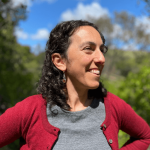An Asylum Seeker, Her High-Risk Pregnancy, and Deep Vein Thrombosis: A Health Network Case Study

Marisa*, a 40-year-old asylum seeker from Central America, was seven months pregnant when she was detained by border patrol. While in custody, she started having difficulty breathing, lower abdomen pain, and severe leg pain. After a transfer to the hospital, she was diagnosed with deep vein thrombosis (DVT) and given a prescription of Lovenox, an anticoagulant to prevent blood clots from forming. Her doctor informed her that she must stay on the prescription until directly before her c-section, and then must continue for six weeks postpartum to ensure a clot won’t break loose and migrate to other parts of the body, which could cause serious complications or death. Reviewing the patient's history, her doctor discovered that she had had two previous children, both via cesarean section. A long vertical scar on her abdomen indicated a “classical” c-section, which has a higher risk of rupture. Given the DVT diagnosis, previous “classical” c-sections, and advanced maternal age, Marisa was considered very high risk.
Shortly after her hospital visit, Marisa was released by border patrol. She immediately traveled to a small state on the Eastern Seaboard. After arriving, she and one of her young children went to a local community health center as a walk-in. An obstetrician assured she was continuing her Lovenox and referred her to the local hospital for her C-section. The doctor learned that Marisa was staying with a friend. The doctor was concerned that Marisa wasn’t geographically stable, so she also enrolled Marisa in Health Network, to make sure that, should Marisa continue to move after her C-section, she wouldn’t lose continuity of care, particularly in light of the DVT diagnosis.
Just a few weeks later, Marisa gave birth to a baby boy via C-section, born with a healthy weight and a good Apgar score. Her doctors at the hospital wrote her a prescription to continue the Lovenox and told her to make a postpartum appointment at the health center.
Norma, a Health Network Associate, followed up with Marisa shortly after she had given birth, but Marisa didn’t respond to her calls. Norma followed up with the health center, which informed Norma that Marisa had not made a postpartum appointment. Norma worked with the health center to assure they sent along health records. Meanwhile, Norma was calling and texting Marisa every two days, but she wasn’t hearing back from her.
Five weeks after Marisa gave birth, and after ten attempts to connect with Marisa, Norma heard from a case manager at a hospital, where Marisa had gone to the emergency room. The case manager said that Marisa was unclear about her diagnosis and was unable to tell her whether she had begun the postpartum Lovenox prescription. Norma forwarded Marisa’s records to the hospital and was able to speak directly with Marisa.
“I saw in the hospital notes that she hadn’t bought the Lovenox because it was over $500. So I asked her, ‘What was that medication for?’ She said, ‘I don’t know, they just said I should get it.’ I asked her if she had already had her six-week postpartum appointment, and she said ‘yes’. When I asked her what clinic she went to and when, I found it was an appointment two weeks after the C-section. I explained that the appointment was a post-surgery appointment, not a postpartum,” Norma recalled. She also backtracked with Marisa to explain the DVT diagnosis, and why the medication was urgently necessary.
At the hospital, Marisa was given two weeks of the Lovenox for free, and the hospital managed to bring down the cost of the prescription from $500 to $60, but Marisa and her husband rejected it, saying they wouldn’t pay. Because of their trip to the hospital emergency room, instead of to a community health center where they would have been eligible for a sliding scale fee, they were already concerned about costs. After more negotiations, and leaning on samples, the hospital managed to eliminate the cost.
Norma called the health center to arrange for a postpartum appointment, but the first available one was two months later. Norma pushed back, explaining the situation, Marisa’s health needs, and the length of time that had already elapsed, but Norma couldn’t get an earlier appointment, so she reached out to other health centers. One wouldn’t accept anyone who wasn’t a patient during the pregnancy. Others said they weren’t accepting new patients until the new year. Norma worked to get Marisa an appointment, but was unable to get one immediately.
Because she was unable to find an alternative, Norma made the necessary postpartum appointment at the hospital. “We were very straightforward” with Marisa about her high risk of death or complications if she had another baby, Norma said, and made sure she understood the importance of birth control.
“I’m still trying to get her into a community health center where she can use the sliding fee scale. I hope I can get her enrolled in a program because she has the baby with her,” Norma said. Marisa also needs an ultrasound after her treatment regimen, which costs $900 at the hospital, but, Norma admitted, she felt a little relieved that she ended up at the hospital, because without that emergency care, Marisa wouldn’t have started on the Lovenox, and she may have died.
Norma’s diligent efforts with dozens of patient, health center, and hospital communications brought Marisa back into care, which may have saved her life. “She really didn’t understand the severity of her situation,” Norma admitted, and she had to spend extra effort to make sure both the patient and her husband were on board with the treatment. Without this consistent care, access to needed medications and contraception, Marisa may have died from DVT. “It was scary -- trying to get the patient into care within a week, and not knowing how she was because she wasn’t answering me. She wasn’t feeling good so she went to the hospital -- that’s the only reason she contacted me,” Norma reflected. Marisa’s case is far from abnormal; loss to follow-up because of mobility and cost is common among migrants. Thanks to Health Network, Marisa is on a path to health, where she can enjoy her life with her three young children.
*Patient name, locations, and some identifying details have been altered to protect the patient’s identity.
Like what you see? Amplify our collective voice with a contribution.
Got some good news to share? Contact us on our social media pages above.
Return to the main blog page or sign up for blog updates here.
- Log in to post comments
